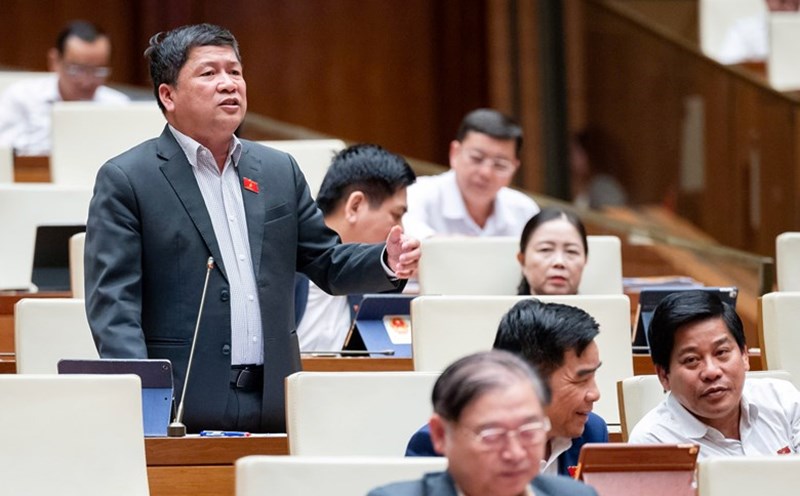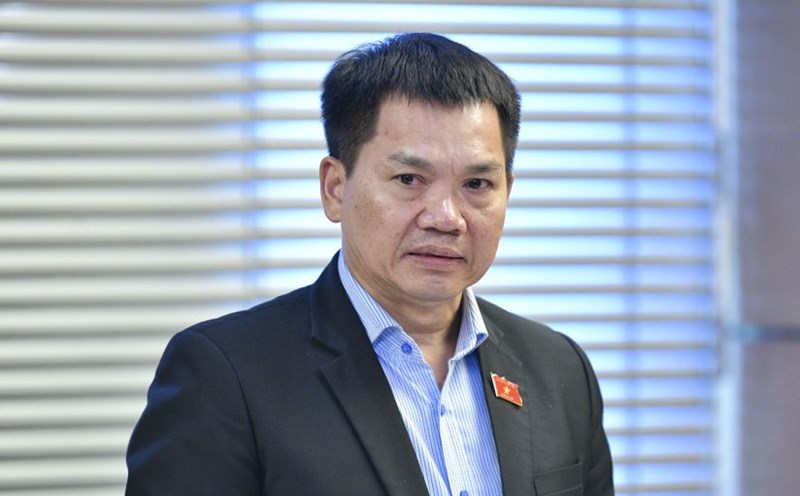Too many curves, taking up 35% of the project length
On the afternoon of November 20, the National Assembly discussed the investment policy for the North-South high-speed railway project.
Delegate Dinh Thi Phuong Lan (Quang Ngai Delegation) proposed to continue reviewing and determining the route direction which plays a particularly important role because it affects the cost, construction technology, and has a direct impact on the ecosystem, culture, and socio-economic development planning of the provinces and cities where the railway passes.
The delegate also mentioned that it is not possible to rule out the possibility that the inefficiency of the old railway line stems from the cause of determining the inappropriate route and direction.
Delegates proposed continuing to coordinate with sectors and localities to form an ecosystem along the highway, in line with the strategy for developing tourism, services, seaport systems, airports, economic zones, and harmoniously and effectively connecting with the national transport system.
Assessing geological impacts, waterway systems, impacts of natural disasters, subsidence, construction foundations, underground works, demonstrating the safety of trains against derailment when running at speeds higher than 300km/h, with too many curves, accounting for 35% of the total project length, some sections with steep slopes.
The project implementation process also requires proactive plans for site clearance and resettlement, linked to urban and rural planning, and systematic population distribution planning. Supplement and update records of land use conversion according to the provisions of law on conversion of rice-growing land and forest land.
Continue to review favorable mechanisms for the adjustment of urban planning, land use planning and other related planning.
Study the principles of creating conditions to continue exploiting revenue and added value from land funds in the vicinity of stations for commercial and service purposes, compensating for the central budget but at the same time encouraging legitimate local revenue sources.
Update technical details of major intersections to reasonably arrange intersections between roads and railways to ensure feasibility and rationality, avoiding major adjustments during implementation.
Delegates also proposed designing and planning the station to meet the requirements of developing auxiliary activities, trade, services, connecting other means of transport, focusing on exploiting underground space, developing new spaces, moving towards developing satellite cities, reducing the load on the central city.

"Assigning tasks and assigning work" to private sector participation
Delegate Nguyen Van Than (Thai Binh Delegation) suggested that it is necessary to focus on 3 economic sectors, in which priority should be given to the private economy because this could help save 30% because the level of large enterprises and small/medium enterprises is different from before.
"If the questions are given in a serious and fair manner, private enterprises can absolutely do it," the delegate affirmed.
According to Thai Binh delegate, when large enterprises participate in a project, they need to follow the spirit of hiring designers, even if it is expensive, and hire independently, not related to the bidding.
The government sets out a problem with private enterprises through specific contracts, paying on time, and certainly Vietnamese private enterprises can completely do it. What they lack, they will proactively pay to rent abroad, while the government only checks, supervises, and takes care of paying.
Delegates believe that if domestic enterprises are mobilized, it will create positive effects with a win-win spirit and there will certainly be no delay in implementation.
The delegate emphasized that when recording and including this proposal in the resolution, it was not only written to create conditions for non-state enterprises but also to assign tasks so as not to cause group interests.











